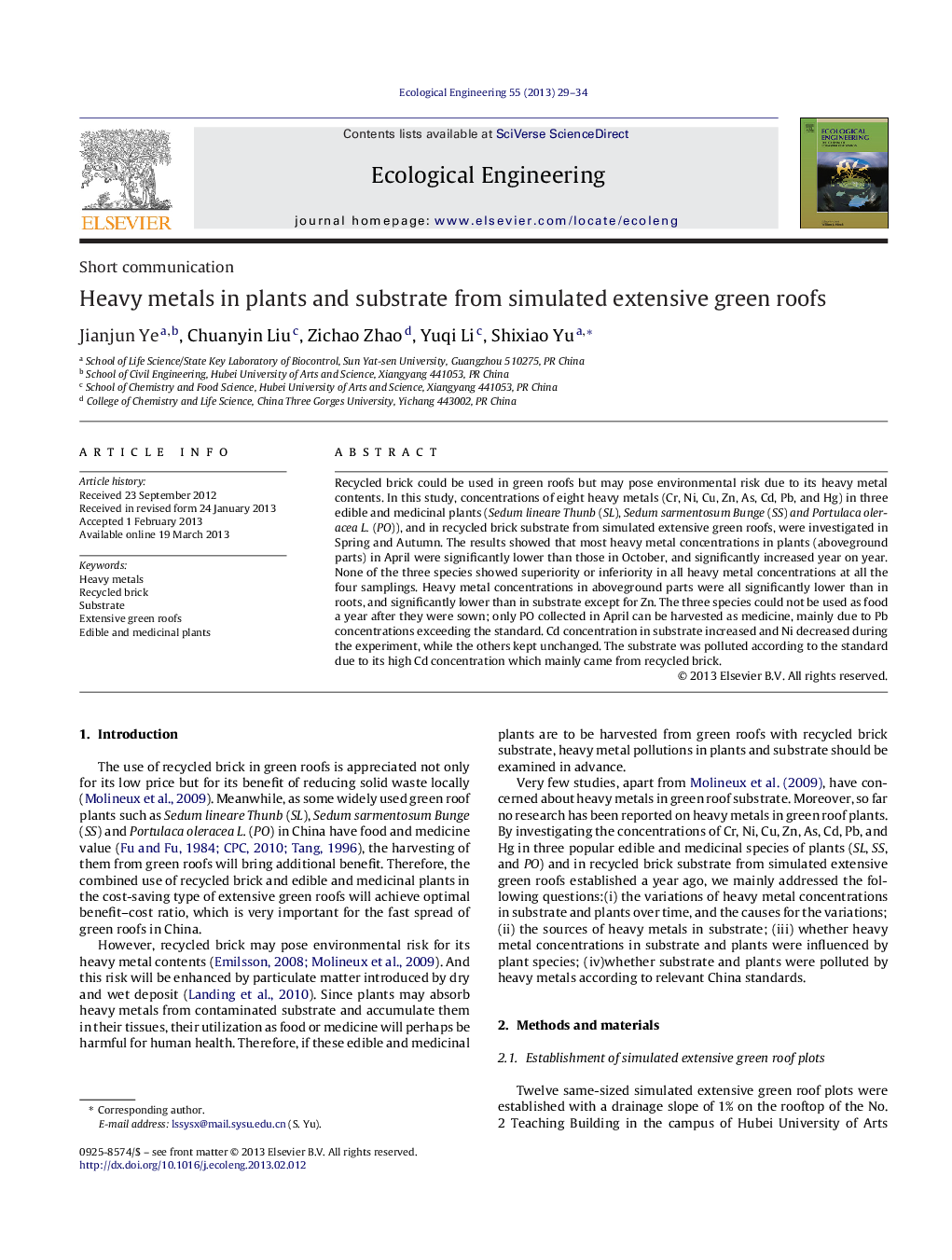| Article ID | Journal | Published Year | Pages | File Type |
|---|---|---|---|---|
| 4389773 | Ecological Engineering | 2013 | 6 Pages |
Abstract
Recycled brick could be used in green roofs but may pose environmental risk due to its heavy metal contents. In this study, concentrations of eight heavy metals (Cr, Ni, Cu, Zn, As, Cd, Pb, and Hg) in three edible and medicinal plants (Sedum lineare Thunb (SL), Sedum sarmentosum Bunge (SS) and Portulaca oleracea L. (PO)), and in recycled brick substrate from simulated extensive green roofs, were investigated in Spring and Autumn. The results showed that most heavy metal concentrations in plants (aboveground parts) in April were significantly lower than those in October, and significantly increased year on year. None of the three species showed superiority or inferiority in all heavy metal concentrations at all the four samplings. Heavy metal concentrations in aboveground parts were all significantly lower than in roots, and significantly lower than in substrate except for Zn. The three species could not be used as food a year after they were sown; only PO collected in April can be harvested as medicine, mainly due to Pb concentrations exceeding the standard. Cd concentration in substrate increased and Ni decreased during the experiment, while the others kept unchanged. The substrate was polluted according to the standard due to its high Cd concentration which mainly came from recycled brick.
Related Topics
Life Sciences
Agricultural and Biological Sciences
Ecology, Evolution, Behavior and Systematics
Authors
Jianjun Ye, Chuanyin Liu, Zichao Zhao, Yuqi Li, Shixiao Yu,
